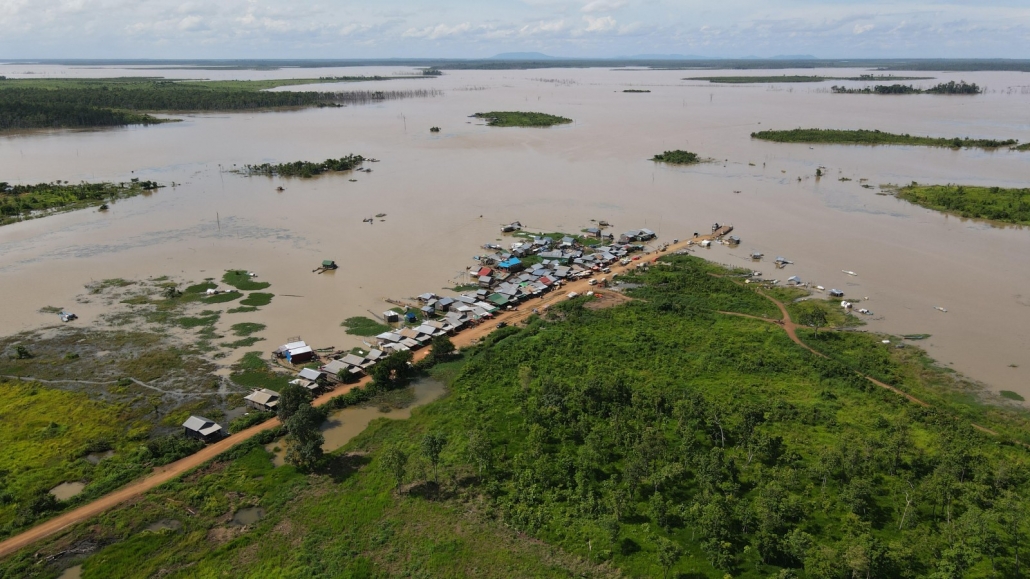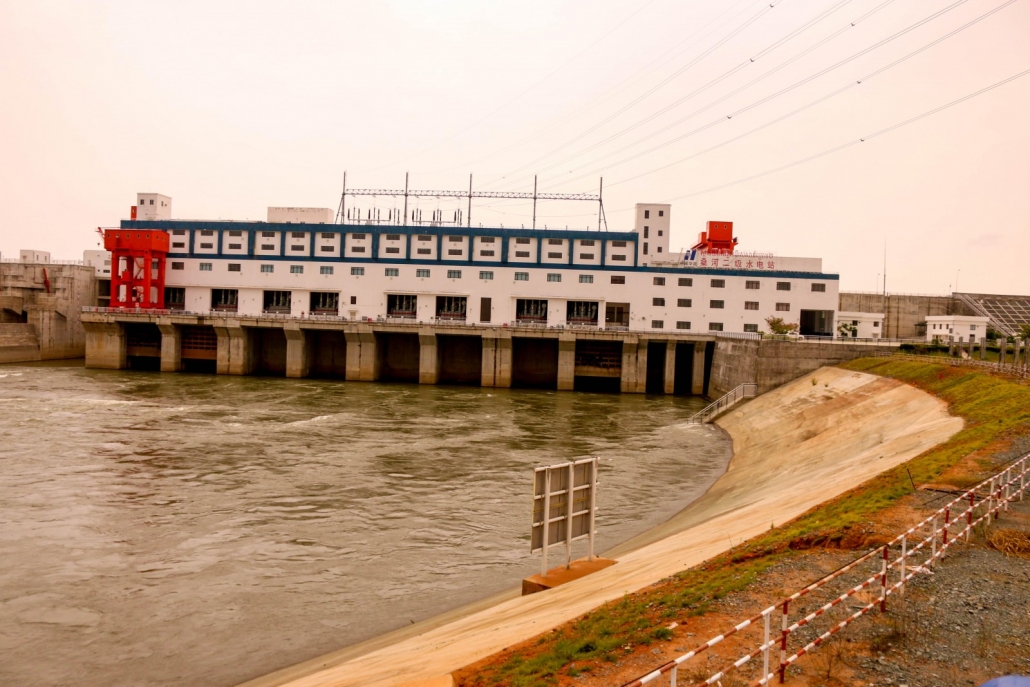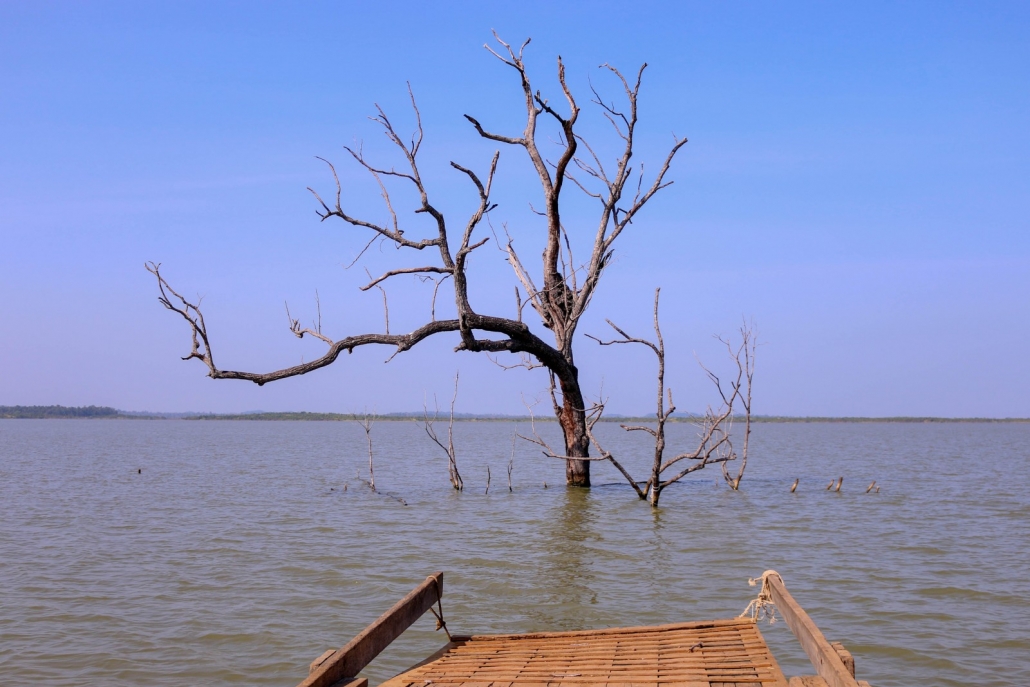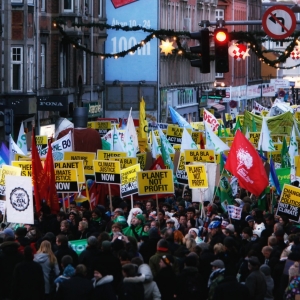The rivers are an ecological bounty in the Mekong watershed. But technical reviews pay little attention to environmental costs of dam building.

A fishing community along the Sesan River in northeastern Cambodia. The construction of a giant dam has flooded large parts of the surrounding area. Photo © Wonders of the Mekong
- The 3S rivers — Sekong, Sesan, and Srepok — are vital to the economic and environmental well-being of the entire Mekong basin. Just like the mainstem Mekong, they are under assault from a litany of threats, chief among them hydropower dams.
- Despite their importance, the 3S rivers remain relatively poorly studied, the consequences of dam developments there receiving less scientific scrutiny and media attention than those on the mainstem Mekong.
- The Lower Sesan 2 Dam, the largest dam ever built in Cambodia, has displaced nearly 5,000 riverside inhabitants — most of them Indigenous and other ethnic minorities who had lived in villages along the two rivers for generations.
By Stefan Lovgren – September 15, 2021
For decades, Nov Lun and his fellow fishermen harvested the rich bounty of the Sesan River in northeastern Cambodia. Then, three years ago, a giant hydroelectric power plant opened upstream from his village of Kumpun. Irregular water releases from the dam began regularly entangling his nets and dislocating his fishing boat. Fish started disappearing, and soon most of his livelihood had washed away. “The river has changed a lot,” says the 70-year-old Lun.
His story is not unique. In fact, others have fared even worse since the construction of the Lower Sesan 2 Dam, which is located near the confluence of the Sesan and Srepok rivers, large tributaries to the Mekong River. According to a Human Rights Watch report released last month, the dam has resulted in the displacement of nearly 5,000 inhabitants, mostly Indigenous people and other ethnic minorities who had lived in villages along the two rivers for generations. According to the report, people who were moved to make way for the dam were coerced into accepting inadequate compensation, provided with poor housing and few services at resettlement sites, and given no training in other ways to earn a living.
Notably, the report also concluded that the dam has harmed “the livelihoods of tens of thousands of others upstream and downstream,” underlining the ecological and economic importance of the so-called 3S rivers — Sekong, Sesan, and Srepok — which originate in Laos and Vietnam and flow into Cambodia where they eventually converge and join the Mekong.

The Lower Sesan 2 Dam, which came online in 2018, is Cambodia’s largest hydroelectric dam. © Wonders of the Mekong
One of the world’s top biodiversity hotspots, the Mekong could easily be considered one of the most important rivers in the world. The lower basin is the lifeblood of fishing and farming for more than 60 million people. This extraordinary productivity flows not only from the main river, but from a boundless network of lakes, floodplains, and tributaries, like the 3S rivers.
While the 3S rivers make up 10 percent of the Mekong watershed, they provide as much as 25 percent of the river’s flow and sediment load, and support 40 percent of the nearly 1,000 species of fish found in the system.
In other words, the 3S rivers are vital to the economic and environmental well-being of the entire Mekong basin. Just like the mainstem Mekong, they are under assault from a litany of threats, chief among them hydropower dams, which trap sediments crucial to agriculture downstream, disrupt fish migrations, and generally degrade ecosystems. In the last three decades, 27 dams have been built in the 3S basin, and more than a dozen additional projects are now being planned.
Last year, Cambodia announced a ten-year moratorium on building new dams on the Mekong. That news was widely welcomed by conservationists and others who had warned of an environmental disaster if construction of two proposed dams in northern Cambodia were to go ahead. Noticeably, the announcement did not mention anything about future dam building in the 3S basin.
Despite their importance, the 3S rivers remain relatively poorly studied, the consequences of dam developments there receiving less scientific scrutiny and media attention than those on the mainstem Mekong. The studies that have been conducted show that dams in the 3S basin have significantly altered the function of the entire watershed, including in the floodplains of Tonle Sap, Southeast Asia’s largest lake and the world’s largest inland fishery.
Located about 15 miles upstream from the Mekong, the Lower Sesan 2 Dam is the largest dam ever built in Cambodia. Chinese-financed and part of Beijing’s Belt and Road Initiative, the dam has a capacity of 400 megawatts, enough, in theory, to supply up to 80 percent of the power to Phnom Penh, the national capital.

A solitary tree stands in the flooded waters of the Sesan River. © Wonders of the Mekong
However, since it came online in late 2018, the dam has underperformed economically, in large part because of a drought that has gripped the region during consecutive years and stymied water flow. “Lower Sesan 2 is not living up to its promise of dropping the price of electricity and providing for power to Cambodia’s power sector, because of a lack of water availability,” says Brian Eyler, who is the Southeast Asia director with the Stimson Center in Washington, DC.
For anyone familiar with the dam’s history, this may not come as a surprise. Plans for the Sesan 2 dam were first proposed by the Asian Development Bank in the 1990s, but put on hold after a report by the Bank deemed it an unattractive investment because of its marginal financial viability and large potential environmental impact. Yet the Cambodian government revived the project in 2007, and in 2012 the dam became a joint venture between Cambodia’s Royal Group and China’s state-owned Huaneng Group, which remains the majority stakeholder. Construction began in 2014.
An early outspoken critic of the Lower Sesan 2 Dam was Ian Baird, a geography professor at the University of Wisconsin-Madison, who has worked in the Mekong region for three decades. In a 2009 report he authored for the Rivers Coalition in Cambodia, an NGO alliance, Baird predicted the dam “would result in increased poverty and malnutrition over a wide area in Cambodia.” He also concluded that “hundreds of thousands of people living as far away as the Tonle Sap Lake and the Mekong Delta … would be negatively impacted by the Sesan 2 dam as a result of severe impacts to important fish stocks that conduct regional migrations.”
Another report released a few years later predicted that the dam would lead to a 9.3 percent drop in fish stocks across the Lower Mekong basin and push over 50 species to extinction. It would have a larger impact on fish biomass than any other planned dam on tributaries in the Lower Mekong, experts warned.
So have those predictions of fish declines come true? The stories from Lun and many other fishers seem to suggest so. But no comprehensive scientific studies have been conducted on the dam’s impact on fisheries. “No one is doing any proper research on this,” says Baird. “There are not a lot of people who are able to collect the data.” Anecdotal evidence suggests that few fish pass through a fish ladder that was installed at the Sesan 2 Dam.
What is clear is that cost-benefit analyses increasingly show that power-exporting countries like Cambodia and Vietnam lose ecosystem services from dam projects to a far greater extent than they gain in hydropower benefits, especially as the cost of renewable energy technologies like solar continue to drop. Yet planning and constructing hydropower dams still take precedence over analyzing environmental effects, and nowhere is this more true than in the Mekong region.
In a study published in the journal Water earlier this year, Sarah Null, a professor at Utah State University in the Department of Watershed Sciences, and her colleagues completed a meta-analysis of environmental trade-offs of hydropower dams in the 3S basin using 46 papers and reports from the past three decades. They found that studies placed far more emphasis on energy development than on environmental impacts. “We’re consistently seeing economic benefits being overestimated and environmental impacts underestimated,” says Null, who is also a part of a USAID-supported research program called Wonders of the Mekong.
While hydrological change and sediment loads were the most common environmental subjects studied, fewer researchers analyzed dam development effects on fish diversity, non-fish aquatic species, river connectivity, and greenhouse gases. The analysis showed, however, that overall evaluations of environmental losses from hydropower dams have increased since 2012. Says Null: “It’s clear that ignoring the environmental impacts of hydropower development in the 3S basin is a very costly mistake.”
Lun, the fisherman, also thinks so. But like most Cambodians, he is reluctant to criticize his government and its policies. “I do not object to the construction of dams, because they are developed for the people,” he says. “I just want to say that the river situation has changed.”



